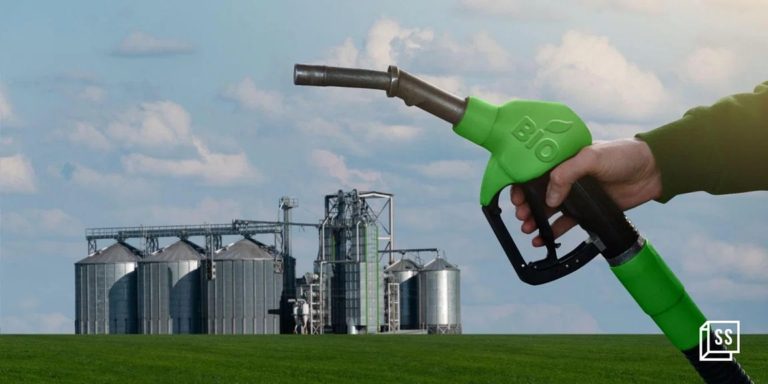
In this edition, we provide detailed monthly data to the end of July 2023 and more detailed breakdowns up to June 2023.
Where comments are made regarding comparative differences, they are UKIFDA comments borne from conversations with third parties.
Prior period data (2021/2022) has been updated by the government and may therefore differ from previous UKIFDA reports.
The majority of the comparisons in this databank are against 2019 – the last full year prior to the pandemic and invasion of Ukraine.
In this edition:
- Temperature review
- Overall hydrocarbon production and demand in the UK
- Hydrocarbon stocks
- Update on diesel, gasoil and heating oil
- Biofuels consumption in transport
- Domestic gas consumption
- Ofgem Price Cap
- Update on the Boiler Upgrade Scheme
- Update on HVO data
Temperature and heating days
The average temperature between June and August was 16.5°C, 0.7°C lower than the same period a year earlier. The average number of HDD was 0.4, 0.1 higher than the same period a year earlier.
In August, the daily average temperature was 16.4°C, 1.9°C lower than August 2022 and 0.1°C lower than the long-term average.
Overall hydrocarbon production and demand in the UK
Production of primary oils fell to 8.5 million tonnes, a near record low, and dropped by 13% in Q2 2023 compared to the same period in 2022. There has been a sustained decline in offshore oil production in recent years, averaging around 10 million tonnes per quarter in 2021 and 2022 compared with roughly 12 million tonnes per quarter in the prior five-year period.
Refinery demand fell by 7.8% compared with the same period in the previous year following maintenance during the second quarter of 2023. Net imports of primary oils increased by 15% compared with Q2 2022; while imports remained stable, exports fell by 10% in line with the decrease in production.
Transport fuel demand increased with mixed product trends. Demand for jet fuel continued to increase, up by 10% in Q2 2023 compared with the same period in the previous year. Road fuels saw a more stable trend, with petrol demand increasing by 4.1%, countered by a 3.2% decrease in demand for diesel. Biofuel demand continued to grow with bioethanol and biodiesel demand up by 16% and 19% respectively.
Stocks
The UK held 8.7 million tonnes of stock at the end of Q2 2023, 6.7% lower than the previous year. During Q2 2023, the UK continued to participate in the coordinated stock release by the International Energy Agency (IEA) in response to Russia’s invasion of Ukraine. UK stocks were equivalent to over 120 days of net imports, well above the IEA requirement to hold 90 days’ worth of net imports.
Heating oil
The first half of 2023 was broadly similar to 2022, and 6.5% down on 2019. July consumption was one of the highest in recent years (22% up on 2019) coinciding with lower prices. The year, to date, remains 5% down on 2019.
The split between domestic and non-domestic kerosene shows a marked difference, with non-domestic kerosene increasing – presumably due to the switch from gas oil to industrial heating oil.
Pricing
The Office for National Statistics (ONS) recently produced its August monthly figures for domestic heating oil prices alongside broader inflation numbers.
Heating oil prices in August 2023 were 74ppl compared to 89.7ppl in August 2022. Prices in June 2023 dropped to their lowest level for almost two years, at 59.1ppl.
Gas oil and DERV
Gas oil consumption continues to decline, decreasing by 63% in the first 7 months of 2023 when compared with 2019.
The half year split is as shown with the biggest fall, as expected, in industry:
Road diesel sales are back to pre-pandemic levels
Biofuels used in transport
Liquid biofuels are mainly used in transport – blended with, or replacing, fossil fuels. Biofuels supplied to the road transport sectors represent the majority of the demand. Biodiesel and biogasoline, as broader categories of fuels designed as additives to, or replacements for, fossil diesel and petrol, usually account for more than 90% of all bioliquids. In Q2 2023, biogasoline consumption was 365 million litres, while biodiesel’s was 442 million litres, respectively 12% and 1% up since the same quarter in 2022.
In Q2 2023, a total of 20 million litres of bioliquids was consumed in non-transport sectors. This is around 2% of all bioliquids consumption for the quarter. Fuels include biodiesel supplied to non-road mobile machinery and bioliquids used by autogenerators to generate electricity.
Domestic gas consumption
Consumption of gas by final consumers fell across all sectors, with household demand falling the most – down 9.3% compared with Q2 2022. Given broadly similar temperatures, the fall in domestic consumption is, likely, a result of increased energy and other household costs. Demand from other final users (largely made up of the commercial and public admin sectors) and industry also fell, down 7.8% and 4.1% respectively.
Boiler Upgrade Scheme (BUS)
The BUS was launched in England and Wales on 1 April 2022, with an approved £450 million funding up until 2025 and is being administered by Ofgem.
The BUS aims to incentivise and increase the deployment of low carbon heating technologies by providing an upfront capital grant towards the cost of an installation of an air source heat pump (ASHP), a ground source heat pump (GSHP) and, in limited circumstances, a biomass boiler. Grants available at launch were £5,000 for an ASHP or biomass boiler, and £6,000 for a GSHP. Recently, the Prime Minister announced an increase to £7500 for an ASHP.
The voucher application process opened on 23 May 2022. In March 2023, the Government announced that the scheme will be extended until 2028 and there will be an additional budget allocation in each additional year.
The original budget for BUS indicated that the government was hoping for 90,000 installations or 30,000 per year.
HVO
Under the RTFO in 2022, 3.3bn litres of RLFs were supplied into the UK. These fuels include multiple types, using multiple feedstocks from nearly 100 countries. 8% was HVO:
Fifty feedstocks were used to supply RLFs, with used cooking oil being the most popular, and palm being only 1% of the total:
These feedstocks came from over 90 countries:
Used cooking oil is supplied from 89 countries:
HVO availability
Production of the leading RLF (Renewable Diesel (RD)/HVO) is increasing across EU and USA:
• In the US +550% to c10bn litres in the last five years, expected to increase to 22bn litres by 2025.
• In Europe expected to double in the next 2 years to 11bn litres.
• Used cooking oil in the UK could provide feedstocks to meet c10% of heating oil requirements.
• In February 2023, the UK Government announced it would revoke the anti-dumping and countervailing duties on HVO originating in the United States of America. This will significantly increase the availability of HVO in the UK. The first US consignment of HVO was delivered to the UK in March 2023.
A report by Portland Analytics, based on data from Imperial College London and the US Department of Energy (DoE), comprehensively analysed the availability of feedstocks used to produce RLF in Europe and North America up to 2030 and compared these to predicted biofuels demand for transport as set out by the International Energy Agency (IEA).(ii)
The report excluded imports of feedstocks, feedstocks that compete with food production, increased land capacity or being used in first generation biofuels because of land issues. Third generation biofuels, such as algae, were excluded as they are not yet commercially available.
Three separate fuel production technologies were analysed, including hydrotreatment, biomass to liquid and alcohol to jet. Each of these has operational plants across the geographies considered.
The report provides conclusive evidence that the UK domestic heating oil markets could easily be accommodated within the overall requirement for renewable liquid fuels and that the lifecycle greenhouse gas emissions reductions achieved would range between 82% and 87%
Ofgem Price Cap
Ofgem has recently announced a new price cap for the 3-month period starting October 1.
The electricity prices above do not include the daily standing charge which is likely to add £195 to an average yearly bill.

